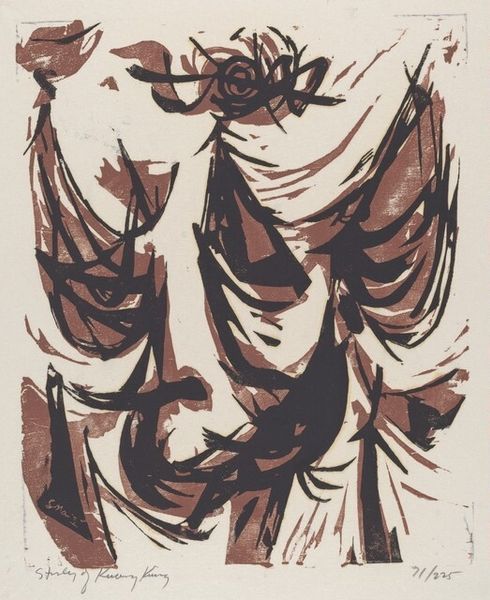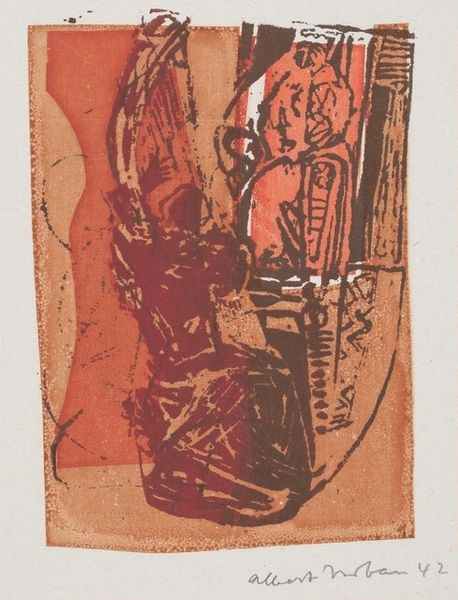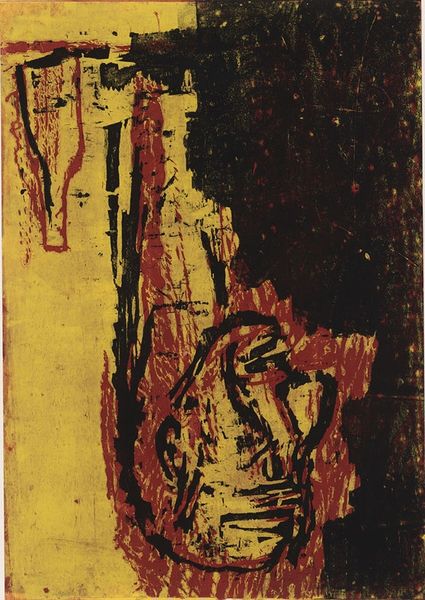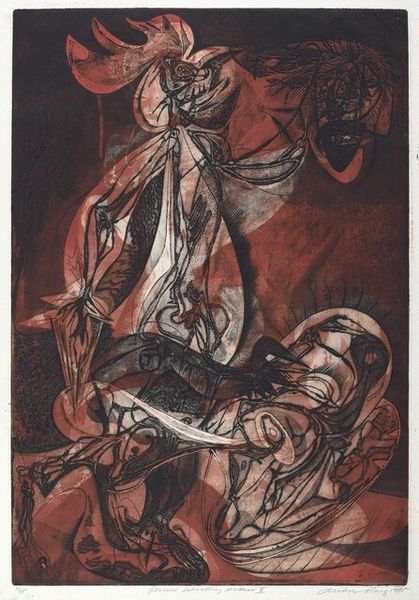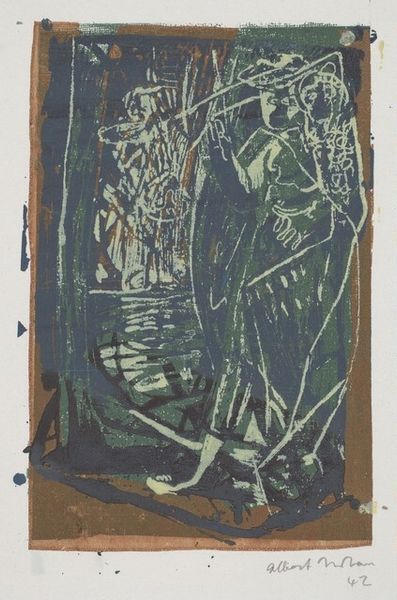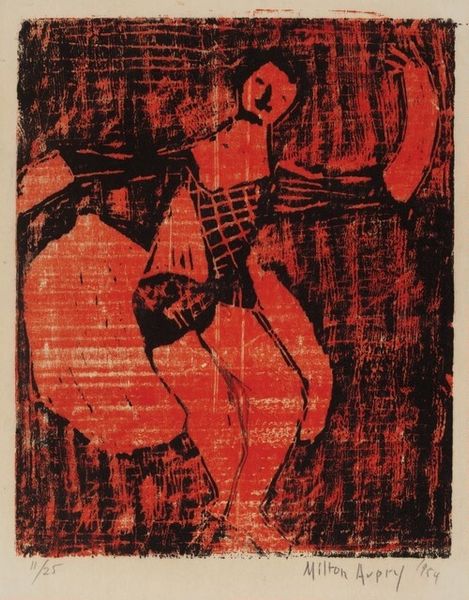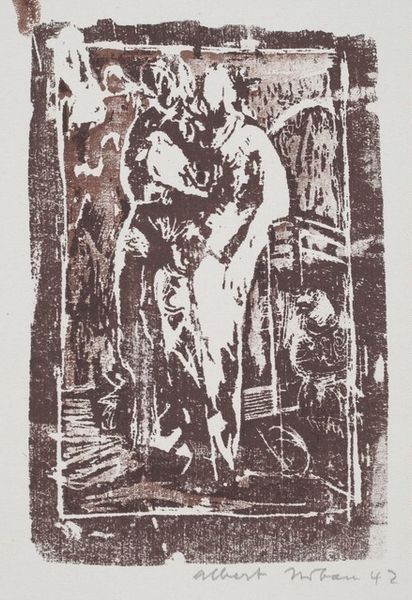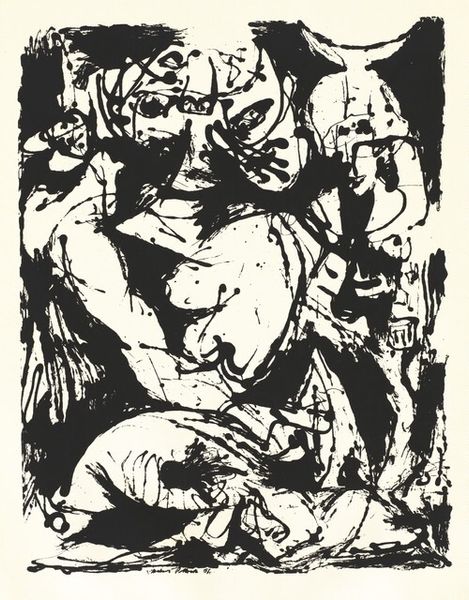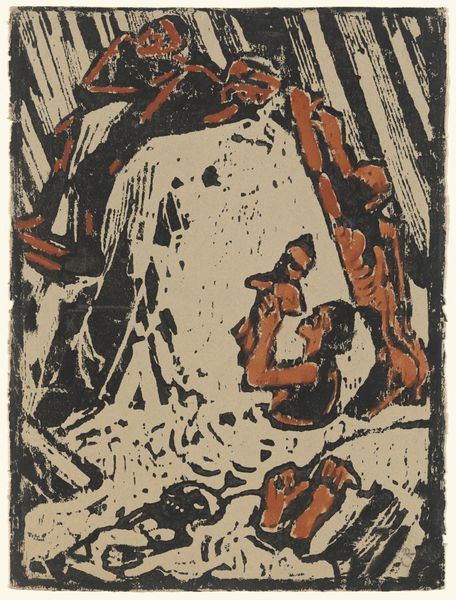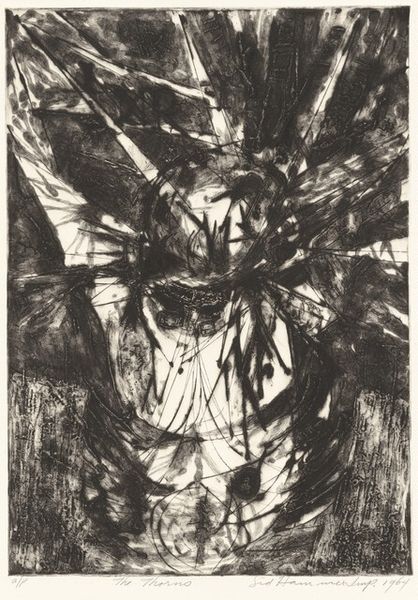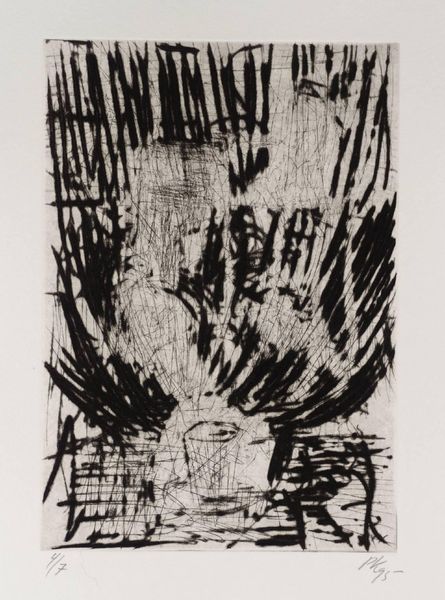
Copyright: National Gallery of Art: CC0 1.0
Editor: We're looking at "Dance" by Albert Urban, created in 1942. It appears to be a print, probably an ink drawing. The immediate impression is of vibrant energy, almost chaotic but with a definite central figure. What strikes you about the composition of this piece? Curator: Immediately, I'm drawn to the interplay of line and form. Notice how Urban employs stark, gestural strokes to define the dancer's figure, simultaneously creating a sense of movement and fragility. The negative space becomes equally important; the white areas aren't simply blank, they actively participate in defining the contours and dynamism of the dancer. Consider the tension created by the predominantly red ink against the ground, further accentuated by the slight, grounding rectangle. Do you perceive a similar tension in the colour choices? Editor: Yes, the red does feel very dominant and intense. The form seems like it’s breaking apart, barely contained within the frame. Is that intentional, perhaps? Curator: The fracturing of form certainly contributes to the work's expressive power. Observe how the linear strokes don't neatly enclose the figure; they extend and bleed, almost dissolving the boundary between the dancer and the surrounding space. This fragmentation could be interpreted as a visual metaphor for the fleeting nature of dance itself, or perhaps the emotional intensity it conveys. Are there specific aspects of this dissolution that you find particularly compelling? Editor: I think the way the red bleeds outward, creating an almost halo effect, adds to that feeling of raw emotion and the ephemeral quality of movement. Curator: Precisely. The deliberate lack of precise definition, combined with the dynamic lines, evokes a powerful sense of both movement and emotion. The tension and interplay between form and its dissolution create a space for interpretive openness. Editor: I never considered the use of negative space being as important, or that the lines that define the shape would extend beyond the body itself. It gives a new dimension to "Dance." Curator: Indeed, appreciating the formal qualities of a work allows a deeper, and constantly renewed, dialogue between the viewer and the art object.
Comments
No comments
Be the first to comment and join the conversation on the ultimate creative platform.
